Understanding the Therapeutic Landscape of Autism and the Role of Phytochemicals
Autism Spectrum Disorder (ASD) is a complex neurodevelopmental condition characterized by challenges in social interaction, communication, and repetitive behaviors. Recent scientific interest has focused on natural compounds capable of modulating underlying biochemical pathways involved in ASD. Among these, sulforaphane (SFN), a phytochemical derived from broccoli and other cruciferous vegetables, has garnered attention due to its multiple mechanisms of neuroprotection and its promising preliminary clinical efficacy.
Overview of Sulforaphane in Autism Research
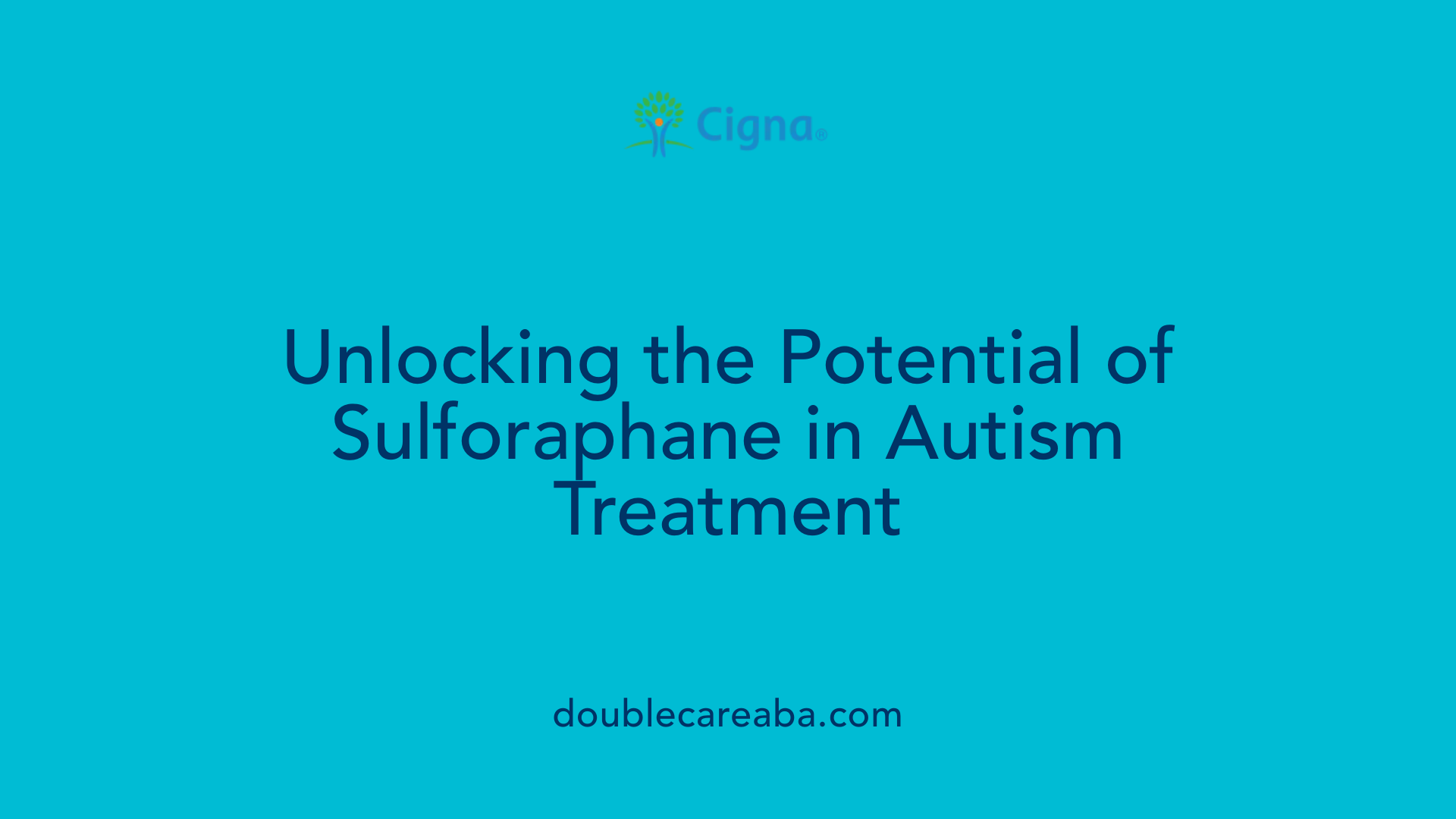
What are the known effects and safety profile of sulforaphane when used to treat autism?
Sulforaphane (SFN), a natural compound derived from broccoli and other cruciferous vegetables, has gained attention for its potential to improve symptoms associated with autism spectrum disorder (ASD). Multiple clinical trials have demonstrated that SFN can lead to significant behavioral benefits in individuals with ASD.
In studies involving children and young adults, participants treated with SFN showed marked improvements in social interaction, communication, and behavioral patterns. For example, a notable trial with young men aged 13–27 reported a 34% improvement in behavioral scores such as the Aberrant Behavior Checklist (ABC) and a 17% enhancement in social responsiveness as measured by the Social Responsiveness Scale (SRS). These effects appeared to be reversible upon discontinuing treatment, indicating a direct correlation between sulforaphane intake and symptom relief.
Clinical research also suggests that SFN may modulate underlying biological mechanisms contributing to ASD. It upregulates genes that protect cells against oxidative stress, reduces inflammation, and activates heat shock proteins, which are all processes involved in neuroprotection and neural functioning.
Regarding safety, SFN is generally well tolerated. Studies report minimal side effects, with common adverse events including gastrointestinal issues like flatulence, constipation, and nausea, as well as sleep disturbances such as insomnia. Some participants experienced increased aggression or agitation, but these were infrequent and comparable to placebo groups.
A few adverse events, such as weight gain or seizures, were reported, but the connection to SFN remains uncertain, especially considering the increased seizure risk inherent to some individuals with ASD. Importantly, no serious or long-lasting adverse effects have been documented, and laboratory tests in clinical trials confirm that SFN has low toxicity.
Overall, current evidence supports that sulforaphane is a promising, safe candidate for adjunct therapy in ASD, warranting further research to confirm its benefits and establish optimal usage parameters.
Empirical Evidence from Clinical Trials
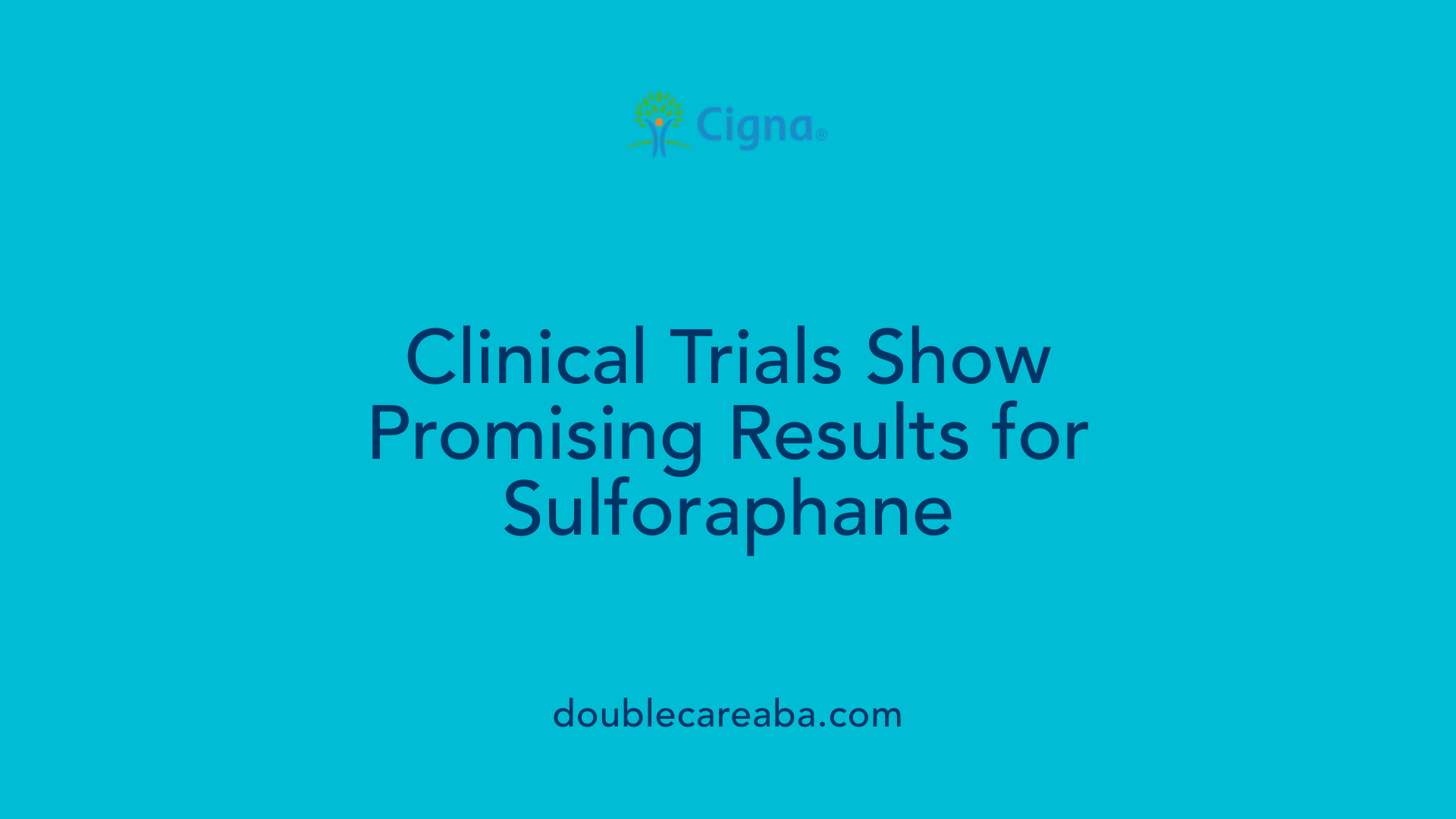
Results from double-blind randomized controlled trials
Multiple double-blind, placebo-controlled trials have been conducted to assess the effectiveness of sulforaphane (SFN) in improving symptoms of autism spectrum disorder (ASD). One such study involving 40 adolescents and young men aged 13-27 treated with daily oral SFN from broccoli sprout extracts over 18 weeks reported considerable behavioral improvements. Participants exhibited a 34% reduction in Aberrant Behavior Checklist (ABC) scores, indicating reduced irritability, stereotypy, and hyperactivity. Additionally, Social Responsiveness Scale (SRS) scores improved by 17%, reflecting better social interaction and communication. Similar findings emerged from other trials, highlighting SFN's potential to address core ASD behaviors through biological mechanisms such as reducing neuroinflammation, oxidative stress, and enhancing cellular stress responses.
Behavioral and cognitive improvements observed
Participants receiving SFN treatment demonstrated significant positive changes in behavior and cognition. Improvements included better social skills, reduced abnormal behaviors, and enhanced verbal communication. For example, caregivers reported notable declines in irritability and hyperactivity, along with gains in awareness and motivation. These behavioral enhancements were reflected in standardized assessments like the ABC, SRS, and Clinical Global Impression Improvement Scale (CGI-I). In a trial with children aged 3-12, caregivers noted better behaviors at 15 weeks, with some children showing marked behavioral improvements, especially in non-verbal communication. Animal models further supported these findings, with SFN improving social behaviors in ASD-like rats, evidenced by increased social sniffing in controlled tests.
Effects of treatment discontinuation
Interestingly, the positive effects of SFN treatment appeared to regress after discontinuation. When participants stopped taking SFN, some behavioral improvements diminished, suggesting that the benefits are closely tied to ongoing treatment. This reversibility aligns with the idea that SFN could serve as a mechanism-based intervention, targeting the biological pathways involved in ASD symptoms. It underscores the importance of continued treatment to sustain behavioral gains. Nonetheless, the safety profile remains favorable, with no significant adverse effects linked to SFN in multiple trials, supporting its potential as a long-term therapeutic option.
| Trial Type | Population | Duration | Main Findings | Additional Notes |
|---|---|---|---|---|
| Double-blind, placebo-controlled | Adolescents/Young adults (13-27) | 18 weeks | 34% reduction in ABC scores; 17% in SRS scores | Significant behavioral improvement; effects regress after stopping |
| Pediatric trial | Children (3-12) | 15 weeks | Caregiver ratings showed improvement | Inconsistent results; some measures showed no significant change |
| Animal model | ASD-like rats | Not specified | Improved social behaviors | Increased sniffing in social tests |
| Ongoing studies | Various | Varies | Continuing to evaluate safety and efficacy | Emphasizing the need for larger, more robust trials |
While evidence from multiple clinical trials indicates promising improvements in ASD symptoms with SFN, some studies yield mixed results, especially in younger children. Nevertheless, the overall trend suggests that SFN can modulate biological processes linked to ASD, providing a scientific basis for future research and potential therapy development.
Mechanisms Underlying Sulforaphane’s Therapeutic Effects
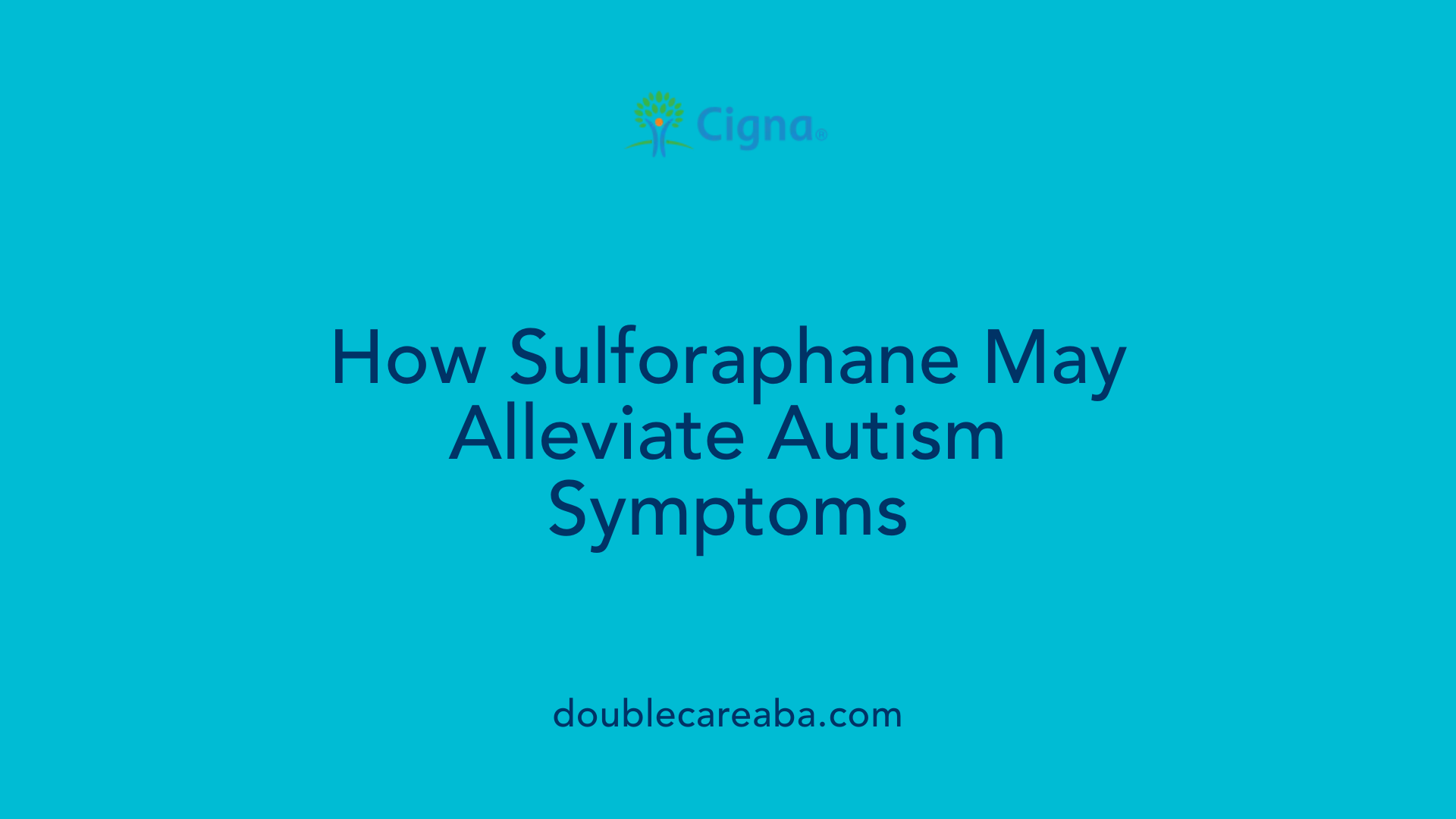
What mechanisms of action have been proposed for sulforaphane in alleviating autism symptoms?
Sulforaphane (SFN), a compound derived from broccoli and other cruciferous vegetables, is believed to work through multiple biological pathways to improve symptoms of autism spectrum disorder (ASD). Central to its effectiveness is its ability to activate the Nrf2-ARE pathway, a critical cellular defense mechanism. Activation of this pathway leads to the upregulation of various antioxidant enzymes, notably glutathione, which enhances the body's capacity to neutralize oxidative stress—a common feature in individuals with ASD.
In addition to its antioxidant properties, SFN promotes mitochondrial health. Mitochondrial dysfunction has been linked to ASD, and SFN appears to support mitochondrial respiration and energy production. By bolstering mitochondrial function, SFN helps reduce neuronal stress and damage, contributing to improved neural communication.
SFN also exerts anti-inflammatory effects. Neuroinflammation is another hallmark of ASD, with elevated inflammatory cytokines observed in affected individuals. SFN reduces neuroinflammation by modulating cytokine production and inhibiting inflammatory pathways, which can lead to better behavioral and social outcomes.
One notable ability of SFN is its capacity to cross the blood-brain barrier, allowing it to directly influence neural tissues. Preclinical research indicates that SFN can attenuate neuroinflammatory responses and protect against neurotoxicity, thus supporting cognitive and social functions.
Furthermore, recent studies have highlighted SFN's role in gut microbiota modulation. Alterations in gut bacteria are associated with ASD symptoms, and SFN has been shown to increase beneficial bacterial taxa, such as Lactobacillus and Prevotella. These changes in the gut microbiome may correlate with behavioral improvements, underscoring the holistic effects of SFN.
Overall, sulforaphane’s mechanisms combine enhanced cellular protection, reduction of harmful inflammation, support of mitochondrial health, and gut microbiota modulation. These interconnected actions address the core biochemical and neurological abnormalities present in ASD, leading to observable behavioral improvements and offering promising avenues for further research.
Biomarkers and Molecular Evidence in Sulforaphane Studies
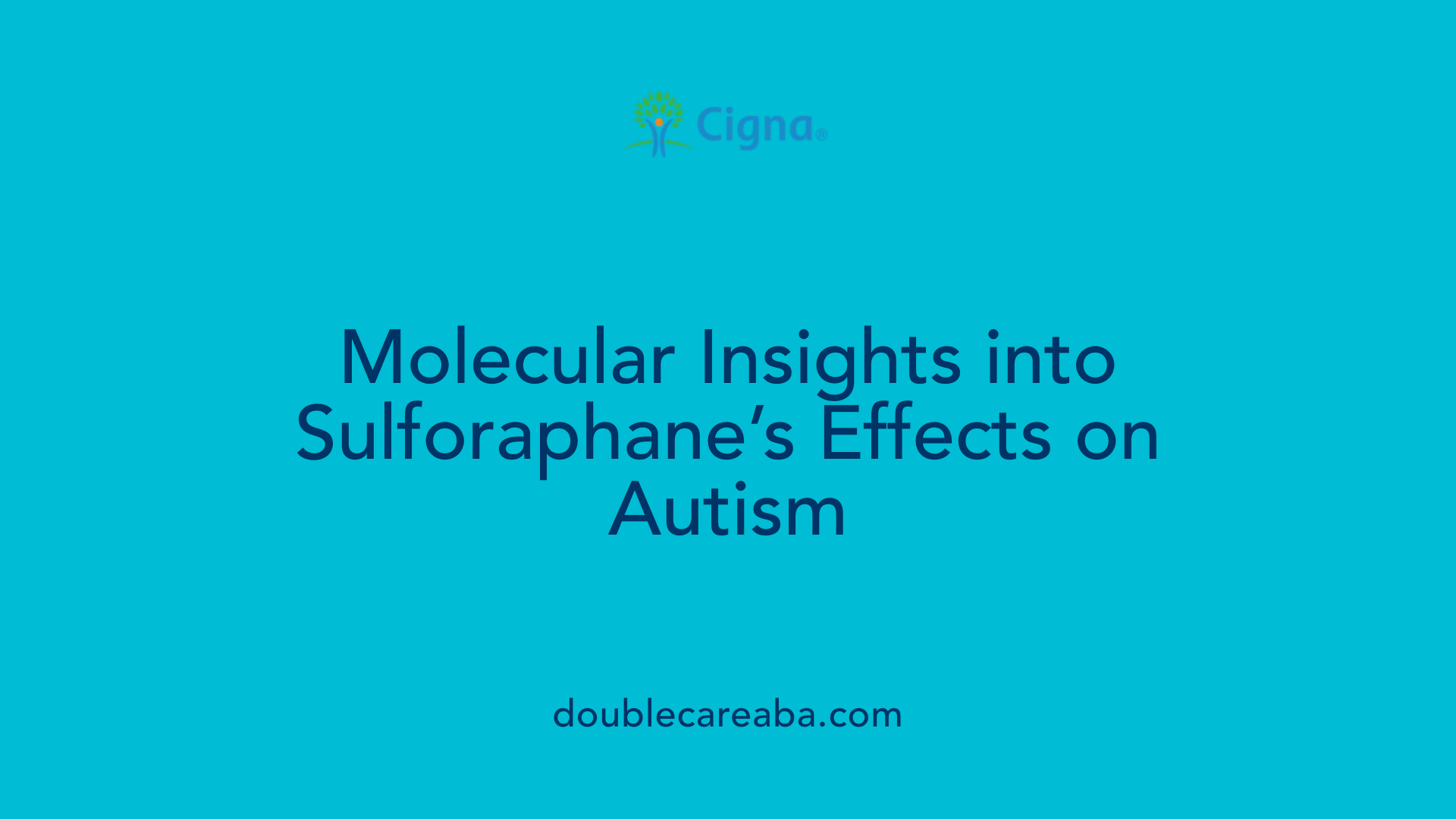
What scientific evidence and biomarkers have been identified in studies on sulforaphane’s effects on autism?
Research into sulforaphane’s role in treating autism has uncovered several important biomarkers that shed light on how it may exert therapeutic effects. Many studies indicate that sulforaphane helps reduce oxidative stress, a common feature in autism spectrum disorder (ASD). For instance, levels of glutathione, a major antioxidant in the body, tend to increase following treatment, suggesting an enhancement of the body's ability to combat oxidative damage.
In addition, sulforaphane has been shown to activate the Nrf2 pathway, a critical regulator of cellular defense mechanisms. This activation results in increased expression of cytoprotective genes such as NQO1, HO-1, and AKR1C1. These genes are involved in detoxification processes and help protect cells against oxidative stress, inflammation, and mitochondrial dysfunction.
Beyond oxidative stress markers, inflammatory cytokines also decrease with sulforaphane treatment. Studies report reductions in IL-6, IL-1β, COX-2, and TNF-α—all of which are associated with neuroinflammation in autism. These changes are complemented by increased expression of heat shock proteins, which assist in protein folding and cellular stress responses, indicating a reduction in neuroinflammatory processes.
Gene expression analyses in blood cells from individuals with ASD reveal that sulforaphane induces a broad molecular response. Notably, there is an upregulation of genes that promote cellular resilience and downregulation of pro-inflammatory genes. This molecular profile supports the notion that sulforaphane exerts neuroprotective, antioxidant, and anti-inflammatory effects, which could translate into clinical improvements.
Clinically, these biomarker changes have correlated with behavioral improvements, such as reductions in Aberrant Behavior Checklist and Social Responsiveness Scale scores. The combination of these molecular and clinical findings suggests that sulforaphane's mechanism involves targeting core biochemical abnormalities in autism, providing a promising framework for further research and potential therapies.
Gut Microbiota and Behavioral Outcomes
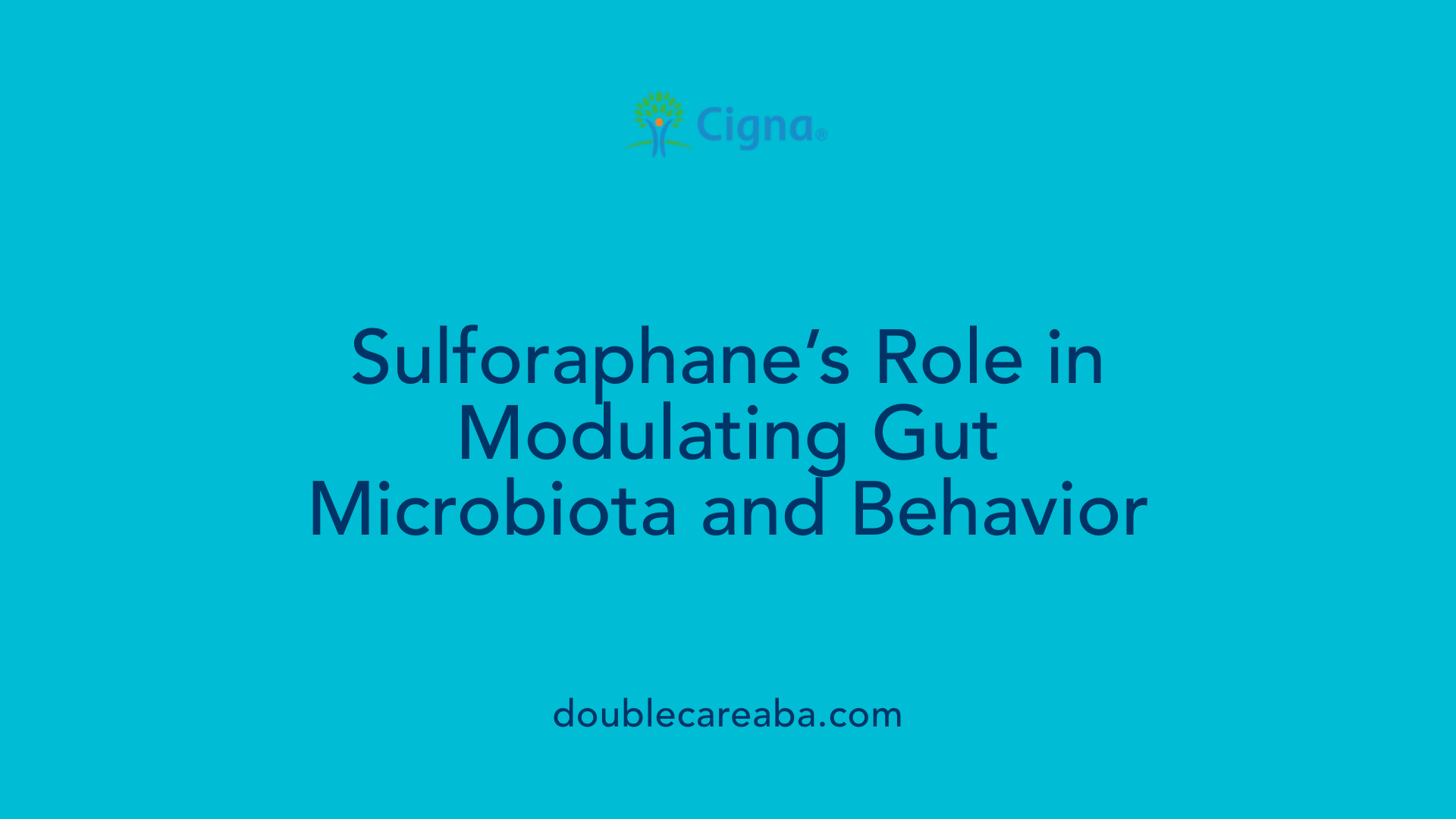
How does sulforaphane impact not only autism symptoms but also related factors such as gut microbiota?
Sulforaphane (SFN), a compound derived from cruciferous vegetables like broccoli sprouts, has garnered attention for its potential in treating autism spectrum disorder (ASD). Beyond its direct behavioral effects, recent research indicates that SFN may also influence gut microbiota composition, which plays a crucial role in the gut-brain axis—a bidirectional communication pathway linking gastrointestinal health and neurological functioning.
Animal studies using ASD-like models with maternal immune activation (MIA) have demonstrated that SFN treatment leads to notable changes in gut bacteria. Specifically, these models showed increased levels of beneficial bacteria such as Lactobacillus and Prevotella. These shifts are significant because such taxa are associated with improved gut health and reduced inflammation. At the same time, SFN administration resulted in decreased abundance of potentially harmful bacteria like Corynebacterium and Staphylococcus. Importantly, these microbiota alterations correlated with observed behavioral improvements, including enhanced social interactions and reduced stereotypic behaviors.
In clinical settings involving children with ASD, microbiota analysis revealed that SFN treatment was associated with an increase in bacteria such as Pasteurellaceae and Haemophilus. Although changes were less dramatic compared to animal studies, these specific taxa have been linked to neuroinflammatory processes and gastrointestinal symptoms common in ASD. Network analyses further suggest that shifts in certain gut bacteria are connected to improvements in behavioral assessments, highlighting a possible mediating role of the gut microbiota.
The interplay between gut bacteria and behavior underscores the potential of SFN to modulate the gut-brain axis. By altering microbiota composition, SFN may help reduce neuroinflammation and oxidative stress—factors that are implicated in ASD pathology. These microbiota changes, combined with direct neuroprotective effects of SFN, provide a multi-faceted approach to managing ASD symptoms.
In summary, SFN appears to impact not only core behavioral symptoms but also the gut microbiome, which might facilitate overall neurological health and gastrointestinal comfort. These findings open new avenues for holistic strategies in ASD treatment, emphasizing the importance of gut microbiota modulation alongside traditional behavioral therapies.
Search Query for More Information: gut microbiota changes with sulforaphane in ASD
| Microbiota Changes | Associated Effects | Notes |
|---|---|---|
| Increased Lactobacillus | Improved gut health, reduced inflammation | Noted in animal models; correlates with behavioral gains |
| Increased Prevotella | Enhanced fermentation and immune modulation | Significant in ASD animal studies |
| Decreased Corynebacterium, Staphylococcus | Lowered potential pathogenic influence | Associated with behavioral improvement |
| Human-specific taxa | Variability across studies | Less pronounced microbiota shifts in children |
This growing body of evidence highlights the broad impact of SFN on gut microbiota, underscoring its potential role in improving both gastrointestinal and neurological aspects of ASD.
Impact of Sulforaphane on Core and Associated ASD Symptoms
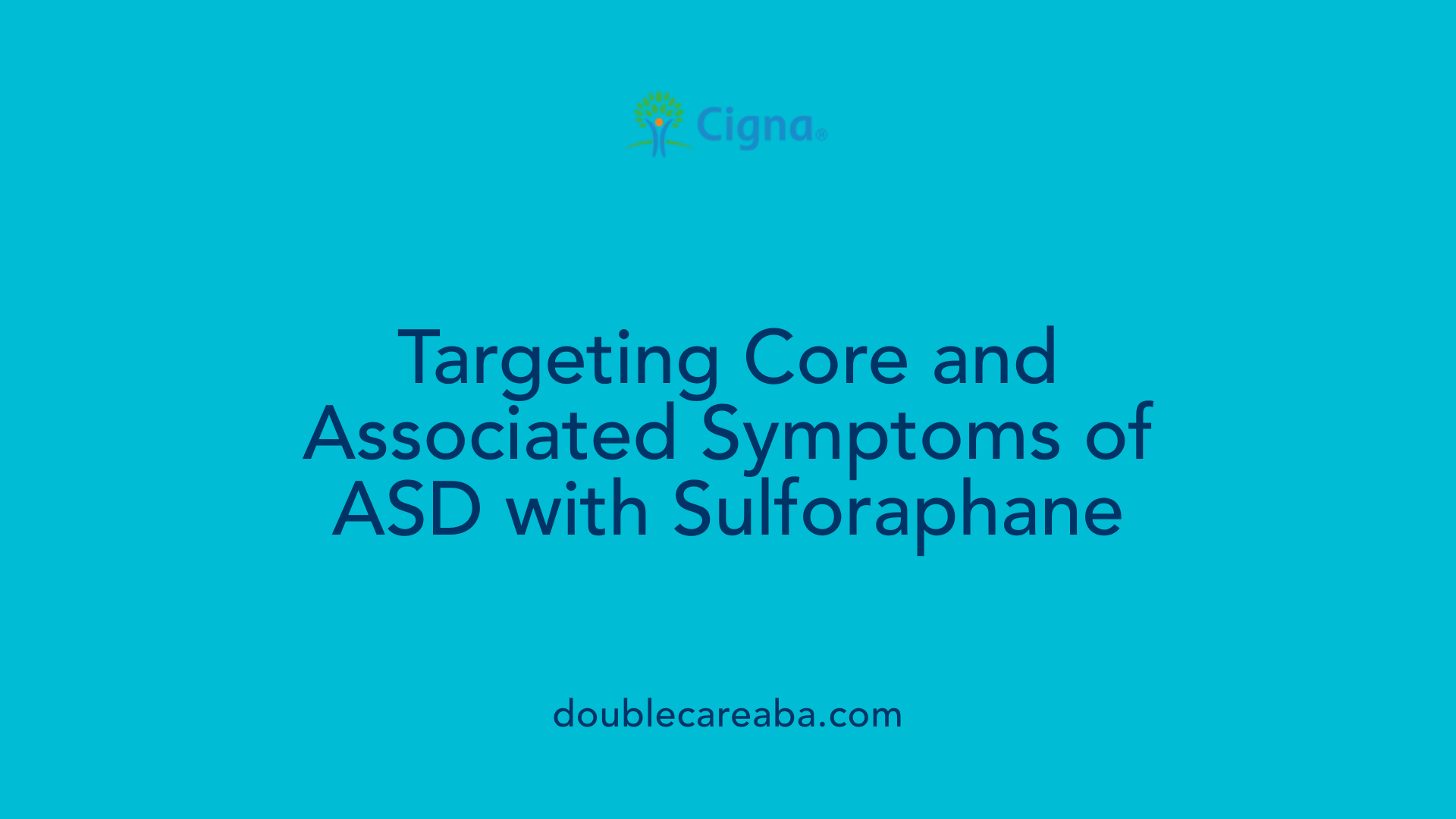
What effects does sulforaphane have on autism symptoms and related factors such as gut microbiota?
Sulforaphane (SFN), a natural compound derived from broccoli sprouts, has demonstrated promising results in improving symptoms associated with autism spectrum disorder (ASD). Multiple clinical trials have shown that SFN can lead to significant behavioral improvements, especially in social communication and behavior patterns.
In studies involving both children and young adults with ASD, participants treated with SFN exhibited notable reductions in behavioral scores on standardized assessments such as the Aberrant Behavior Checklist (ABC) and the Social Responsiveness Scale (SRS). For instance, some trials reported around a 34% improvement in ABC scores and a 17% improvement in SRS scores after treatment periods typically lasting 18 weeks. These improvements encompassed key areas like social interaction, communication, and reduction of abnormal behaviors.
Interestingly, the research indicates that the benefits of SFN are reversible. After discontinuing treatment, a regression of some behavioral gains was observed, implying that ongoing supplementation may be essential for maintaining the improvements in ASD symptoms.
Beyond behavioral effects, SFN has a notable impact on gut microbiota composition. Both animal studies and human clinical trials document shifts in microbial taxa following SFN administration. Specific bacteria such as Pasteurellaceae and Haemophilus were associated with the treatment, and these changes correlated with behavioral improvements. This suggests a connection between gut microbiota modulation and symptom alleviation, pointing to a potential mechanism by which SFN exerts neurobehavioral benefits.
Overall, the evidence underscores SFN's potential as a therapeutic agent that targets multiple facets of ASD. Its capacity to improve core symptoms, combined with modulating gut microbiota, makes it a promising candidate for mechanism-based intervention. However, the regression of benefits upon stopping treatment highlights the need for sustained administration to prolong its positive effects.
Long-Term Research and Future Directions
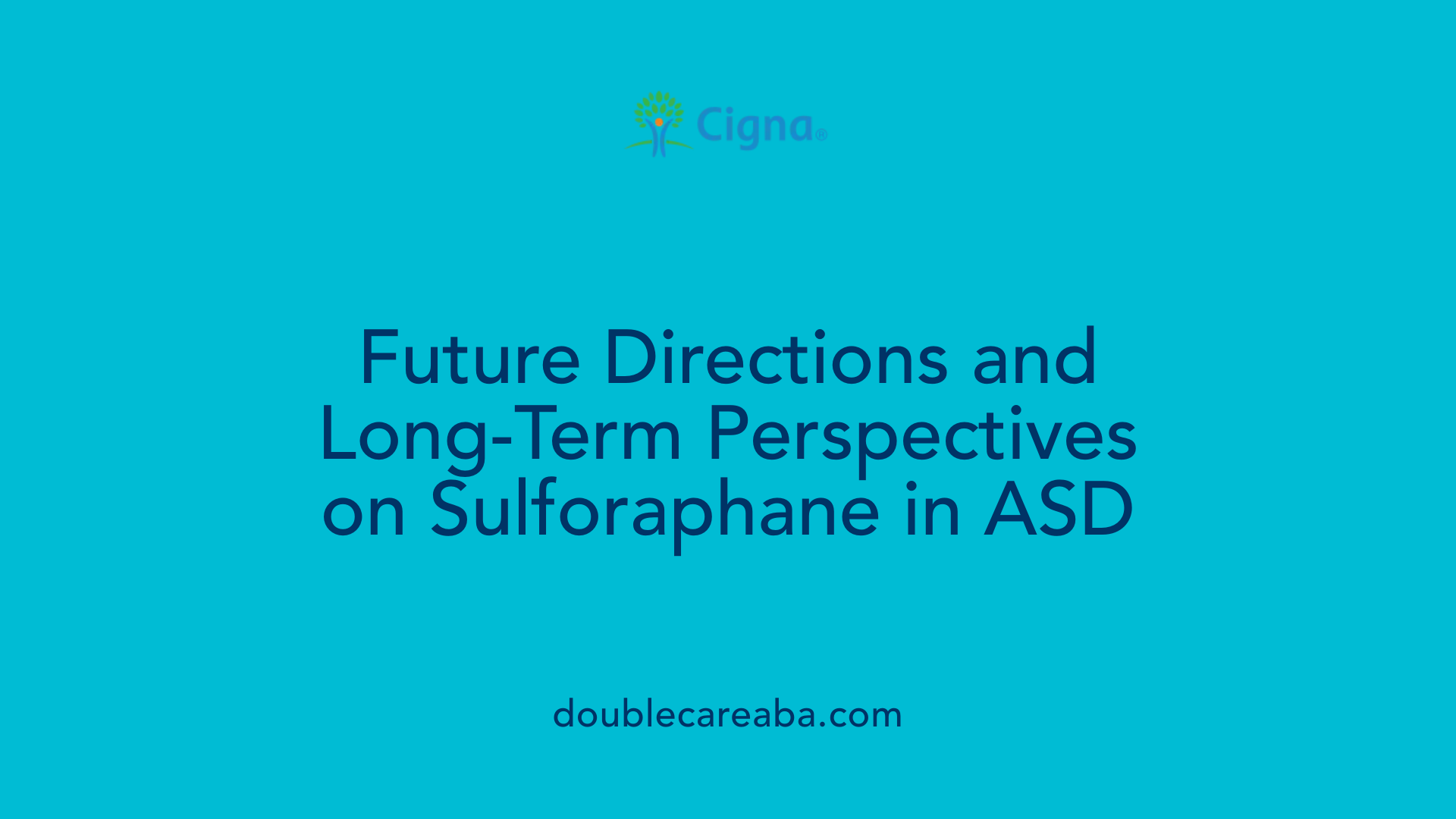
What does current scientific literature say about the therapeutic potential of sulforaphane for autism?
Research to date suggests that sulforaphane (SFN), a compound derived from broccoli and other cruciferous vegetables, holds promise as a treatment for autism spectrum disorder (ASD). Multiple clinical trials, including randomized, double-blind, placebo-controlled studies, have demonstrated that SFN can lead to notable improvements in behavioral symptoms such as irritability, social responsiveness, stereotypic behaviors, and hyperactivity.
In studies where participants received SFN over periods ranging from 12 to 30 weeks, several showed significant enhancements in standardized assessments like the Aberrant Behavior Checklist (ABC) and Social Responsiveness Scale (SRS). These improvements tend to be reversible after stopping the treatment, indicating a direct effect of SFN on ASD symptoms.
Safety profiles from these trials are encouraging — SFN appears well tolerated with minimal side effects, primarily mild gastrointestinal issues or sleep disturbances. Biological investigations suggest that SFN may exert its effects through mechanisms such as reducing oxidative stress, curbing neuroinflammation, improving mitochondrial function, and modulating gut microbiota composition.
Follow-up and ongoing studies continue to support SFN’s potential, with some trials exploring biomarkers that could predict individual responses and optimize treatment protocols. Despite the promising results, researchers emphasize that larger, long-term studies are needed to fully understand the benefits, limitations, and safety of prolonged SFN use in diverse populations.
The current evidence underscores SFN’s potential as a mechanism-based therapy targeting core and associated features of ASD. However, establishing definitive treatment guidelines will depend on future research confirming sustained benefits, optimal dosing, and long-term safety.
| Study Type | Population | Duration | Main Findings | Side Effects | Future Research Focus |
|---|---|---|---|---|---|
| Clinical trials | Children, young adults | 12-30 weeks | Behavioral improvements, reversible effects | Mild gastrointestinal, sleep issues | Long-term outcomes, optimal dosing |
| Animal studies | ASD models | Varies | Improved social behaviors, reduced neuroinflammation | Not applicable | Biomarker validation, mechanism exploration |
| Microbiota studies | ASD children and models | Varies | Gut microbiota modulation correlated with behavioral gains | Not applicable | Microbiota-targeted therapies, personalized approaches |
Overall, the accumulation of experimental and clinical evidence supports the view that SFN could be a safe, effective, and mechanism-based option for ASD treatment. However, further research is needed to translate these findings into routine clinical practice and long-term management strategies.
Conclusion and Therapeutic Outlook
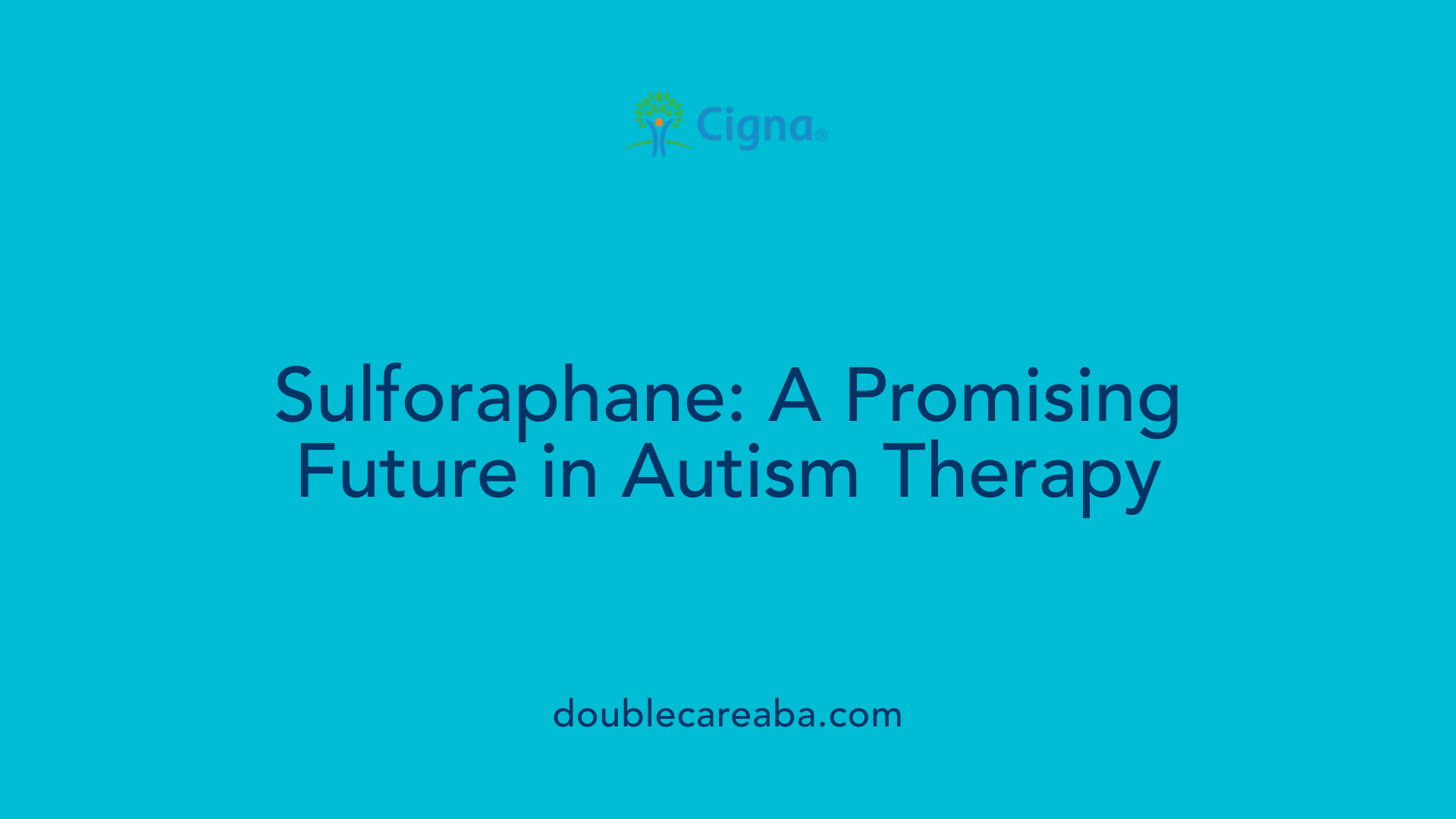
What is the current evidence supporting sulforaphane as a treatment for autism?
Multiple clinical studies have explored the potential of sulforaphane (SFN), a compound derived from cruciferous vegetables, notably broccoli sprouts, in treating autism spectrum disorder (ASD). Several randomized controlled trials, including double-blind, placebo-controlled studies, have demonstrated promising results.
In one prominent trial involving adolescents and young men aged 13-27, SFN administered over 18 weeks resulted in a 34% improvement in behavioral symptoms measured by standardized scales like the Aberrant Behavior Checklist (ABC) and a 17% improvement in social responsiveness scores. Participants showed notable enhancements in social interactions, verbal communication, and reduction of abnormal behaviors.
Similarly, studies on children aged 3-12 reported behavioral improvements, especially in non-verbal communication, along with biological changes such as improved oxidative stress markers and inflammation levels. These findings support SFN’s potential to positively affect core ASD features.
Furthermore, animal model research indicates that SFN can improve social behaviors and influence the gut microbiota composition, both factors linked to ASD. These preclinical findings enhance understanding of how SFN could exert neuroprotective and anti-inflammatory effects relevant to ASD treatment.
What are the limitations and challenges?
Despite encouraging data, current research faces several challenges. Many studies have small sample sizes which limit the generalizability of results. For instance, some clinical trials with children showed inconsistent outcomes, with no significant differences in primary measures.
The effects observed often diminish after stopping treatment, suggesting the need for ongoing administration and raising questions about optimal dosing and treatment duration.
Additionally, variability in study design, assessment tools, and outcome measures complicate comparisons across trials. The biological mechanisms, although understood to involve antioxidant, anti-inflammatory, and gene upregulation pathways, are still under active investigation.
Safety profiles appear favorable, with minimal side effects reported, but some adverse events like weight gain and, rarely, seizures require monitoring, especially in sensitive populations.
What is the potential for clinical application?
The accumulating evidence indicates that SFN could become a complementary treatment option for ASD. Its mechanisms, targeting oxidative stress, neuroinflammation, and cellular stress response, align with known pathological features of ASD.
However, before widespread clinical adoption, large-scale, long-term studies are essential to determine optimal dosing, treatment duration, and patient selection criteria. Standardizing formulations of SFN and ensuring consistent bioavailability are also critical for safety and efficacy.
Ongoing research into biomarkers may help identify which individuals are most likely to benefit from SFN-based therapies. As the evidence matures, SFN holds promise as part of multimodal approaches, potentially enhancing quality of life and functional outcomes in ASD.
| Aspect | Findings | Implications |
|---|---|---|
| Clinical Trials | Several randomized controlled trials showing behavioral improvements | Supports potential efficacy but needs larger studies |
| Biological Effects | Improvements in oxidative stress markers and gut microbiota | Suggests mechanism-based benefits |
| Safety | Mild side effects, well tolerated | Suitable for continued exploration |
| Limitations | Small sample sizes, inconsistent results, need for standardization | Further rigorous research required |
| Potential Role | Adjunct or complementary therapy | Promising yet preliminary |
Overall, while more research is necessary, current data support SFN’s potential as a safe and effective treatment avenue for ASD, with ongoing studies helping to clarify its role in clinical practice.
Future Perspectives and Research Needs
The accumulating evidence indicates that sulforaphane is a promising candidate for adjunct therapy in ASD, with demonstrated behavioral benefits and an excellent safety profile. Despite these positive findings, the variability in outcomes across studies underscores the necessity for more standardized, large-scale, and long-term clinical trials. Examining biomarkers and mechanistic pathways will enhance understanding of individual responses and optimize treatment protocols. As research progresses, sulforaphane’s role in integrated treatment strategies, including gut microbiota modulation, holds exciting potential, fostering hope for more effective and safe therapies for those affected by ASD.
References
- Sulforaphane treatment for autism spectrum disorder: A systematic ...
- Sulforaphane treatment of autism spectrum disorder (ASD) - PNAS
- Therapeutic efficacy of sulforaphane in autism spectrum disorders ...
- Randomized controlled trial of sulforaphane and metabolite ...
- Sulforaphane Treatment of Children with Autism Spectrum Disorder ...
- Sulforaphane Treatment of Young Men with Autism Spectrum ...
- A Trial of Sulforaphane in Autism















